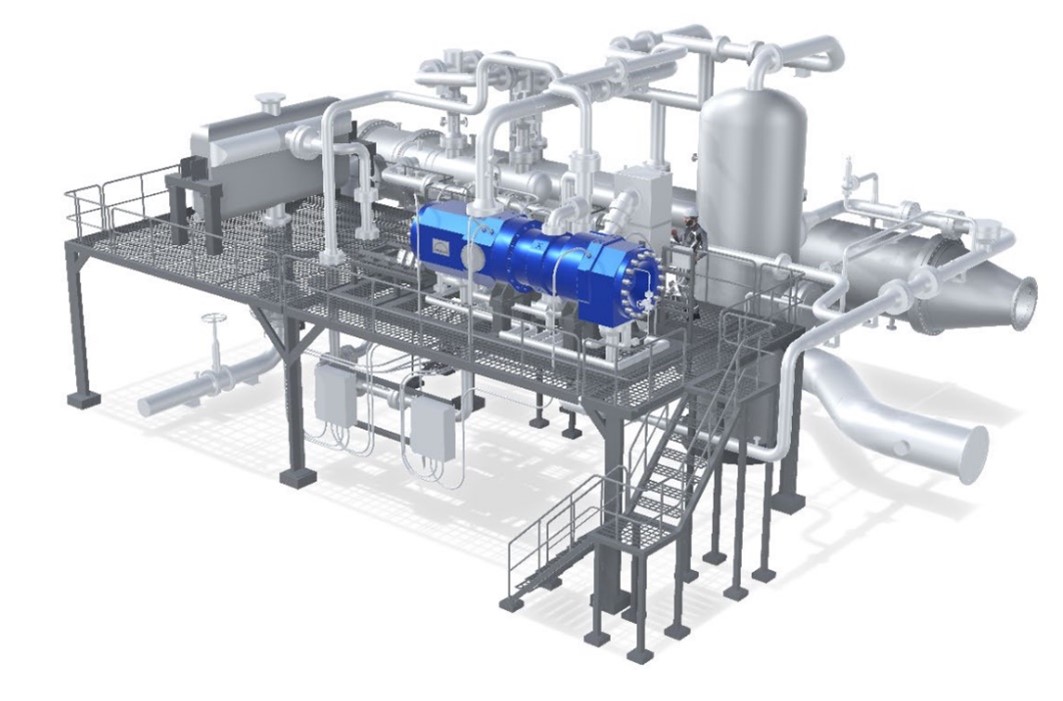“Tallinn’s development strategy for 2035 stipulates that the district heating system will produce heat from renewable sources only. The use of wastewater and seawater would be a big step towards this goal,” says Robert Kitt, Chair of the Board of Utilitas Tallinn.
Utilitas has been working on development projects using Tallinn’s wastewater and seawater for a few years. The Paljassaare property, belonging to AS Tallinna Vesi, was chosen as the location for a wastewater heat pump station, and an agreement for building rights was signed with Tallinna Vesi this May. The design criteria for the station have been issued and the procurement process for the main equipment is ongoing.
Utilitas has also mapped possible locations and performed a preliminary assessment of environmental impacts for the seawater heat pump station. Robert Kitt says that the building permit application procedure is currently underway, which, among other factors, determines the location and size of the area in Tallinn Bay, where the company will be permitted to build marine piping.
“Our goal is to complete these developments by 2027 at the latest, but this requires close cooperation between various parties. At the end of 2022, the Council of Europe’s regulation on accelerating the deployment of renewable energy entered into force, according to which the installation of heat pumps and wind energy capacities should be made an object of substantial public interest, and should be built by a simplified process as prescribed in the environmental laws of the EU. Real life is more complicated, but we should still act as quickly as possible. Investment decisions will be made when all permits have been received and the procurements are complete.”
The concept of district heating is familiar to most people, but what is district cooling all about?
District cooling works similarly to district heating: in the district cooling station, the energy carrier, i.e. treated water, is cooled and directed to the cooling unit of the client’s building via pipelines. The water used in the cooling process is then returned to the district cooling station, once the water is no longer cool, where it is cooled again.
District cooling is widespread in Northern Europe. Helsinki and Stockholm have increased their district cooling networks four to five times in the last decade, and Stockholm’s 400 MW district cooling network is one of the largest in the world. In the future, Utilitas plans to produce most of the cooling energy from the seawater heat pump station, which uses Tallinn Bay for free cooling. This further increases the efficiency of the cooling system and reduces the use of primary energy.
District cooling is more energy efficient than local solutions and has a significantly smaller carbon footprint. All in all, district cooling has better security of supply, is safe, and possesses no risk of refrigerant leakage to threaten the environment.

What are the main advantages and opportunities of using wastewater and seawater for district heating and cooling?
Two-thirds of the heat consumed by Utilitas customers is currently produced from biomass or is already waste heat. Based on the experience of the Nordic countries, the most optimal way to transfer the last third of consumed heat to renewable sources in Tallinn is to apply wastewater and seawater heat pumps. This is also the technology recommended by the European Union in REPowerEU for the decarbonization of the production of heat, which is why a faster procedure time (known as a fast track) was created for their installation. Encouraging the use of waste heat, wastewater, and seawater for heating and cooling is also outlined in the coalition agreement of the current government.
In the summer, the seawater heat pump can also be used for district cooling, which would allow the free cooling method to use seawater to cool Tallinn’s buildings. Seawater heat pumps draw energy from the sea where, at a certain depth, the water temperature is constant throughout the year. Seawater heat pumps are used, for example, in Helsinki and Stockholm.
In Tallinn, deeper waters of the Baltic Sea are quite close to the city compared to the capitals of other neighboring countries. This makes Tallinn a favorable place for extracting energy from seawater for both district heating and cooling purposes. However, this is a first-time project in Estonia and uses innovative technology, which means that the preparation must be thorough. Thus, possible support measures that could help to implement this major project will also be mapped.
How does the use of wastewater and seawater in district heating and cooling systems affect the carbon footprint?
The district heating system already has a positive handprint in Tallinn. We produce more renewable electricity in the cogeneration plants that supply heat to the district heating network than Tallinn’s district heating customers consume in their households, which reduces the need to produce electricity from fossil sources.
The Utilitas district heating production and distribution system is very efficient, and the carbon footprint depends primarily on the fuels used. Currently, two-thirds of the heat reaching Utilitas’ customers is produced from biomass or is waste heat, and natural gas is still used for the remaining third. The use of heat pumps allows Utilitas to reduce the share of natural gas to less than 10%. This would allow the use of about 500,000 MWh of fossil fuel per year to be avoided, which would mean a reduction of CO2 emissions by at least 100,000 tons every year.
What are the possible economic impacts, including the costs related to the use of wastewater and seawater, and savings in the field of district heating and cooling?
Utilitas has invested approximately 450 million euros in Tallinn’s district heating system, and the investment into the building of wastewater and seawater heat pumps is around the same amount.
By using local and renewable energy sources, we are no longer dependent on imported fossil fuels. This means that the price is more stable and also cheaper compared to the current price level. Investments in heat pump stations are major and involve technological risks but, all in all, these are important steps towards achieving carbon neutrality. The pricing principles remain the same, as the limit price continues to be coordinated by the Competition Authority.
Overcoming the planning and technical challenges and integrating the heat pumps into the district heating system will provide an innovative and environmentally friendly solution that will serve as an example for other cities by the sea.

Utilitas and Tallinn City created a joint venture for developing district heating
In August, Tallinn City and OÜ Utilitas received permission from the Competition Authority to establish a joint venture in the field of district heating, AS Utilitas Tallinna Soojus, and signed agreements for the transfer of shares. The company will be 33.34% owned by the city of Tallinn and 66.66% by Utilitas. The joint venture will implement the agreed investments, with a strong emphasis on the development of environmentally friendly heating. Tallinn’s goal is to switch to carbon-neutral district heating as soon as possible, and this goal is also included in the Tallinn 2035 development plan.
The joint venture can invest in wastewater and seawater heat pumps, which will help to reduce the share of natural gas to less than 10% by 2027 at the latest, to reduce the amount of heat produced from natural gas, and also minimize dependence on imported fossil fuels. In addition, it is planned to replace all old non-pre-insulated district heating pipelines with modern solutions by 2035, as a result of which heat loss will be reduced to less than 10%.
The strategic goal of Tallinn City is to ensure the availability of environmentally friendly district heating solutions and the operation of a vital service in the territory of the city. For this, the district heating network must be continuously modernized and necessary large-scale investments made.



